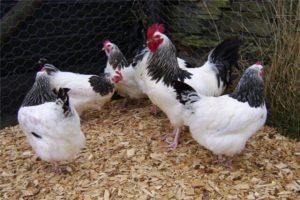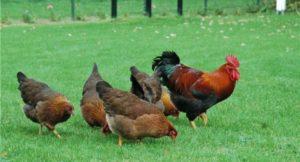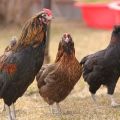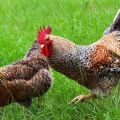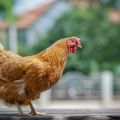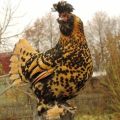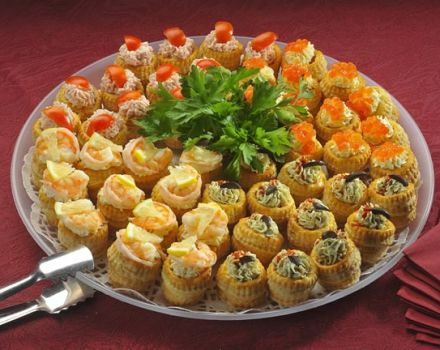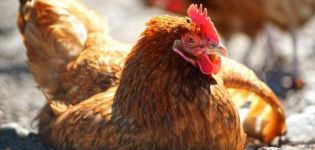Characteristics and description of Faverol hens, rules of keeping
Today, poultry farmers favor dual-use chicken breeds. Using them for breeding, they provide themselves with both a meat product and eggs in the required amount. In this regard, in recent years, selection breeds of chickens bred for this purpose have become very popular. The results of successful breeding work include the Faverol chicken breed.
History of origin
Experienced breeders have long been familiar with the amazing Faverol, the so-called bouillon chicken. This breed was developed in the 1860s in the north central region of France. To create it, breeders have used five different breeds. Later, breeders from all over the world tried to breed more advanced species. As a result of German selection, it was possible to create a meat variety, with improved egg-laying and decorative features.
General description and characteristics of Faverol chickens
Faverol chickens have distinctive external features that set them apart from other varieties of poultry..
Appearance
The Faverol Chickens are a large breed with feathered shanks, a clutch and five toes (not four like others). A distinctive feature of the breed's appearance is a special shaped ridge, called leaf-like, and a fairly large beard located directly under the beak.
The rooster differs in many respects from the chicken in the color of the plumage - the feathers on the wings have a pronounced black color. Eyes are red-orange, small head, middle neck with a collar, long back with tight-fitting wings, fur-legged.

Productivity and egg production
Chickens can produce up to 180 yellow-pinkish eggs weighing 55-60 grams already in the first year of life. On average, Faverolles weigh about 5 kilograms and chickens about 4.3 kilograms. The taste of this bird is compared to pheasant meat. The main feature of Faverol is meat early maturity.
Temperament
Birds of this breed are friendly, calm and non-aggressive in nature. And that's why Faverolle has become a popular breeding bird. This breed of birds of French selection prefers to lead a sedentary lifestyle, which often leads to overweight. In this regard, the diet of chickens should be limited.
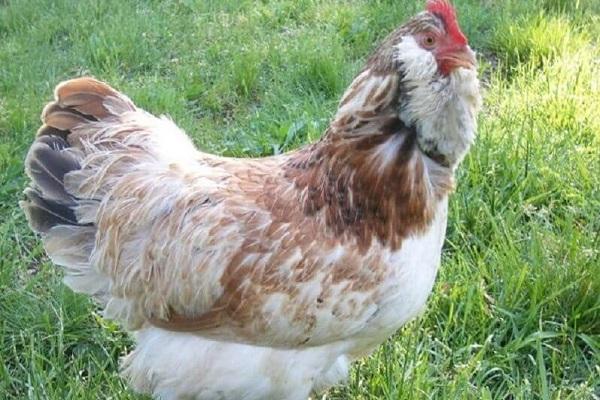
Breed varieties
Thanks to selection work and careful culling, three varieties of this breed were obtained, which have pronounced distinctive features.
Salmon
The plumage of salmon chickens is mainly brown and creamy white. But males are darker, with black, brown and straw colored feathers. This species is also called Lachshuner and is very popular due to its attractive appearance.
Blue
A smart and impressive look is achieved through a combination of blue and salmon. The contours of the females are clearly marked. This variety is more expensive than regular Faveroles, but the color does not affect productivity.
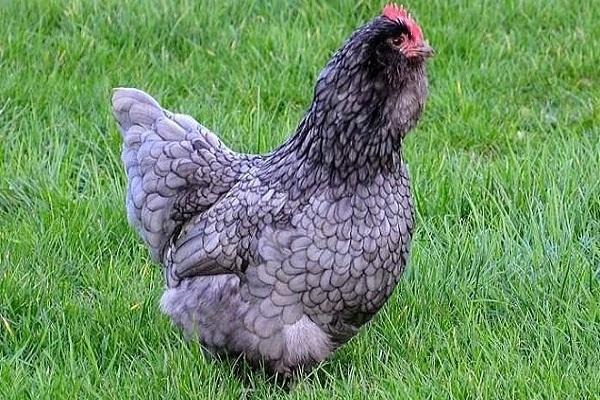
Colombian
Much less common is the Colombian variety, which has a distinctive silvery feather color with black tips. Roosters and chickens of this species have the same color, but the males are larger and have lush plumage.
Signs of uncleanness
The main feature that demonstrates the breed of Faveroli is five-legged. The fourth and fifth toes have a clear separation, and the claw of the fifth toe is always pointing up. In addition, the signs of uncleanness include the following: irregular ridge shape, lack of a lush beard and cisterns, a thin neck without a characteristic "hairstyle", a yellowish beak, a long tail, and a hawk heel.
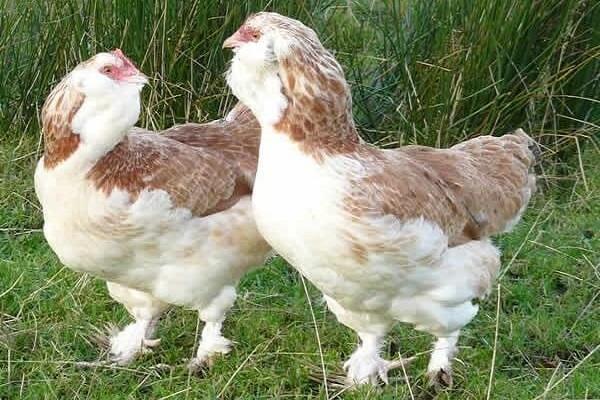
Main advantages and disadvantages
Faverolle chickens are highly prized by farmers and breeders for their excellent meat taste, abundant egg production and elegant appearance. Experienced farmers note the following positive aspects of the Faverol breed:
- High egg production even in the cold season - this is due to the fact that the body of the bird is covered with fluffy plumage, which is why the chicken of this breed tolerates wintering without problems.
- Strong immunity.
- High quality meat characteristics.
- Increased productivity.
- They quickly reach product maturity.
However, like other varieties, Faverol chickens have their negative sides: a predisposition to obesity, a reduced maternal instinct, when crossed with other breeds, they lose productivity.

Content Tips
For increased productivity and health of poultry, a number of main rules for keeping this breed must be observed.
Poultry house
The chicken coop will need to be equipped with ventilation and a heater during the cold season. Since chickens are quite heavy, it is not recommended to arrange a high roost - low boxes with ladders will do. The bedding under the perches is made from sawdust and straw. Drafts and excessive moisture are also not allowed. Due to the abundant feathering in the house, it is recommended to clean regularly - at least once a week.
Place for walking
Birds of the Faverol breed need to walk in an open area to prevent excess weight and increase egg production.
It is worth noting that chickens are not capable of flying, and therefore the place is suitable without a high fence.
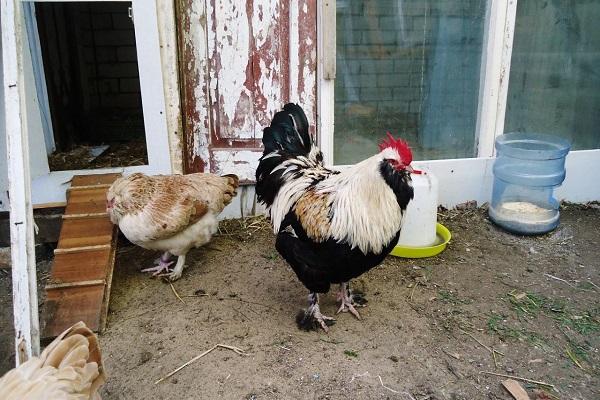
Feeder and drinker
Faveroli, due to the peculiarities of their metabolism, will need metered feeders that birds cannot turn over or dig into them with their paws. Drinkers in the house should always be filled with fresh, clean water.
Molting period
During this period, birds will need to be provided with trace elements, minerals, vitamins and create a safe and comfortable environment. Laying hens stop laying during molting.
Feeding
A distinctive characteristic of the Faverolle breed is the love of free space, since chickens love to independently seek out their own food, finding insects in the soil and receiving the necessary substances in sufficient quantities.In this regard, it is not necessary to constantly feed chickens with vitamin supplements and synthetic components.
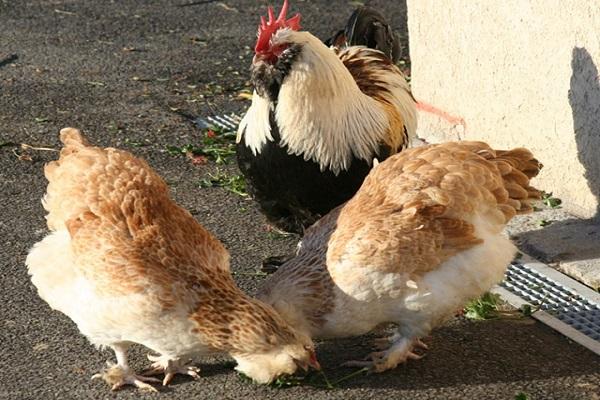
Adult birds
Farmers give preference to dry or combination feed. Wet mash can ruin the plumage of chickens, so they are rarely given. In summer, a third of the food is green and forage foothills. From herbs they are given legumes, grains, dandelions, clover. After walking, give grain or mixture. The daily grain rate for one chicken is 150 grams. With obesity, it is reduced to 80 grams. Feeding with vegetables and coniferous branches is also allowed.
Chicks
Chicks develop and grow quickly with proper care and feeding. The diet of only hatched chickens is made up of boiled finely chopped eggs, cottage cheese, corn porridge, greens. After ten days, feeding with chicken feed is allowed. During the month, they are fed up to 8 times a day, at regular intervals.
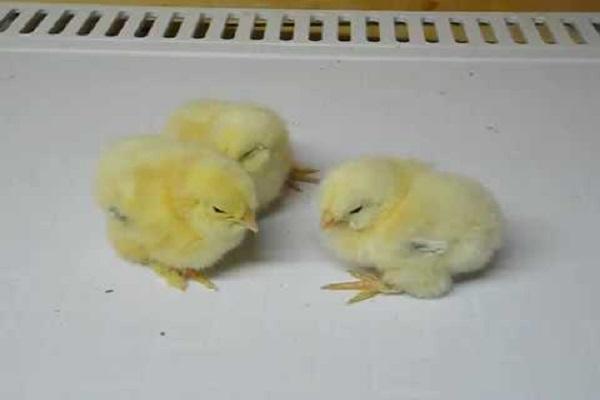
Breeding rules
Since Faveroli do not differ in prevalence, and their breed characteristics can be lost when crossing, it is recommended to acquire purebred birds from reliable breeders. It is possible to select material only from chickens older than one year. The egg for the incubator must be clean, with a smooth and firm shell, standard weight, fresh (no more than two weeks). The right time for breeding young stock is the end of winter.
During incubation, it is extremely important to adhere to the main rules, since even the slightest violations lead to genetic abnormalities in the chicks. The temperature regime should not exceed 37.6 degrees. Chicks appear on the 22nd day, they are immediately transplanted onto a warm bed in a room with a temperature of 38 degrees. If there is no possibility of incubation breeding, a hen of another breed can be used to obtain offspring.
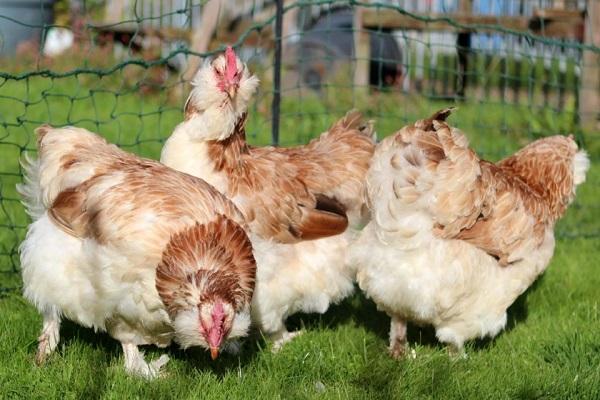
Diseases and methods of dealing with them
Faverol chickens are characterized by strong immunity, but mistakes in their maintenance and care can lead to diseases. Unbalanced nutrition and unsanitary conditions lead to weakening of chickens, as a result of which they can develop bacterial or infectious diseases.
Also, chickens do not like excessive moisture, so it is important to take care of dryness in the house. Another problem is the tendency of chickens to be obese, in this regard, attention should be paid to a balanced diet..
